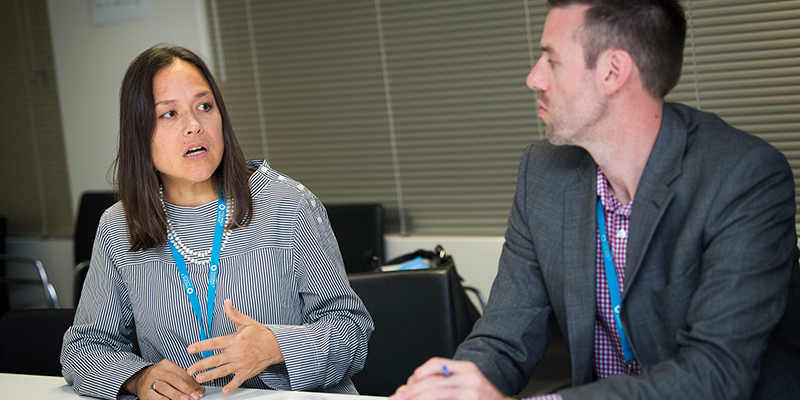In the past 3 years, homelessness has increased nearly 30% in Austin, Texas. Despite this increase, shelters still operate beneath capacity and sometimes, homeless individuals are seen sleeping on the street next to shelters with empty beds. Robert Kingham from the Downtown Austin Community Court and Sabine Romero from the Austin Office of Innovation believe that this mismatch occurs because in the past, the city purchased social services for homeless people, rather than with them.
The Downtown Austin Community Court (DACC) seeks to change this dynamic by including end-users in the public procurement process. The Innovation Office is supporting this effort as part of the city’s participation in the Open Government Partnership.
Including these clients, many of whom are homeless, is no easy task. The public procurement process is long and complex – without seeing immediate results it is difficult to keep the trust and involvement of homeless Austinites. DACC asked LabStorm participants to consider the best ways to include these voices and build their needs into the city’s public procurement strategy.
Here are the major takeaways.
- Build a relationship before asking for feedback. LabStorm participants shared their own experiences in the role that relationships play in closing the loop. With slow governmental processes, it’s not always possible to execute on the changes that homeless Austinines request, and if a relationship already exists, it’s easier to explain the barriers to acting on these requests without losing trust. You can let them know that you value their voice and have heard their ideas, even if they won’t be implemented immediately. This might mean having social workers for the government work in outreach projects for a few months before they bring survey questions to the table. Or perhaps, making partnerships between the government and local service providers more apparent by including the Austin city logo at program locations so that homeless Austinites know the government is involved before they come in to collect feedback.
- Show your work. Let people know what you ARE doing. It’s easy to get bogged down in all the things you can not do because of various procurement rules or lack of funding, but each step forward is something to share and celebrate. Publicly showing progress can take on many forms, including a mural that details feedback collected from homeless Austenites and what the long-term plan is to enact their ideas on the sidewall of a shelter.
- Shift the risk. Having a variety of stakeholders involved in the feedback process from the beginning is essential to working differently – and effectively. Telling your story to all the stakeholders – both vendors and end-users, in the same room – enables all involved to not only hear one another’s concerns, but to also understand the compromises government must make to address competing needs. For example, getting the general counsel of an agency on board at the beginning of discussions – rather than just asking them to sign off on a new idea – creates a level of investment that mitigates risk.
Thanks to these conversations, the City of Austin, TX is looking for opportunities to bring vendors and clients along in the process of listening.
By helping vendors retool, learn and improve as a program, they can focus on results rather than following the specific programmatic requirements of government-funded services. Follow along as City staff brings in more stakeholders to their early conversations, and creates space for further meeting of the minds!
Do you have experience with feedback and listening in public procurement? We’d love to hear from you! Email [email protected] or comment below to share your thoughts.







